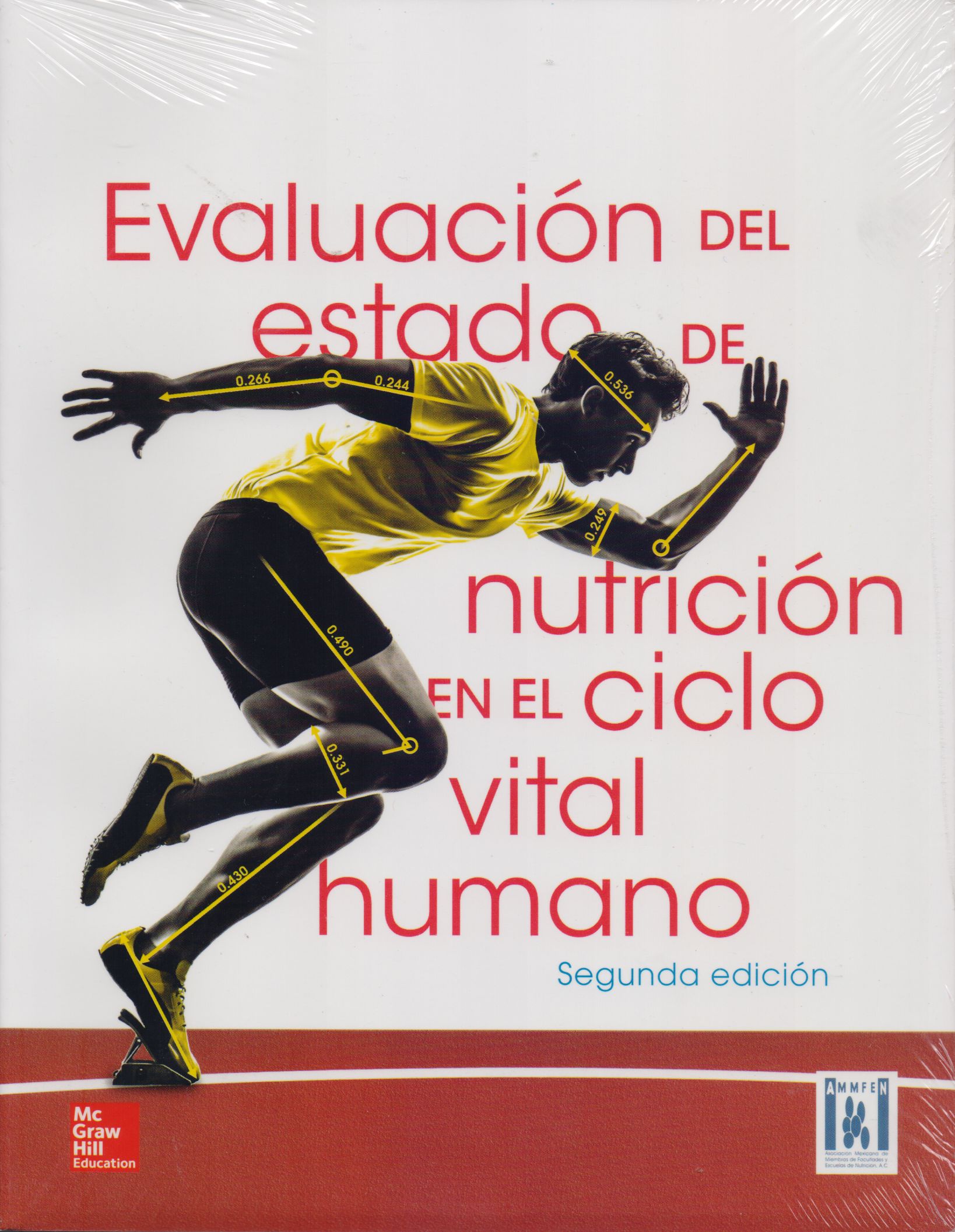Libros relacionados
 |
Evaluación del Estado de Nutrición en el Ciclo Vital Humano Anzola Rojas, Sérvulo Mc Graw Hill Educacion |
 |
Wardlaw: Perspectiva en Nutrición Byrd-Bredbenner, Carol / Moe, Gaile / Beshgetoor, Donna / Be Mc Graw Hill Educacion |
 |
Hábitos Alimentarios. Psicobiología y Socioantropología de la Alimentación López-Espinoza, Antonio / Magaña González, Claudia Rocío Mc Graw Hill Educacion |
 |
Nutrición y Dieta en la Prevención de Enfermedades Erdman, John / Macdonald, Ian / Zeisel, Steven Mc Graw Hill Educacion |
 |
Nutrición Molecular Gordillo Bastidas, Daniela / Gordillo Bastidas, Elizabeth Mc Graw Hill Educacion |


|
Título: Novel Enzyme Technology For Food Applications | |
| Autor: Rastall, Robert | Precio: $3645.00 | |
| Editorial: Crc Press | Año: 2007 | |
| Tema: Nutricion | Edición: 1ª | |
| Sinopsis | ISBN: 9781420043969 | |
| Written by an international team of contributors, Novel Enzyme Technology for Food Applications reviews the latest advanced methods to develop specific enzymes and their applications. Part 1 discusses fundamental aspects of industrial enzyme technology. Chapters cover the discovery, improvement and production of enzymes as well as consumer attitudes towards the technology. Part 2 explores enzyme technology for specific food applications such as textural improvement, protein-based fat replacers, flavor enhancers, and health-functional carbohydrates. It is a standard reference for all those in industry and academia concerned with improving food products with this advanced technology.
Contents. PRINCIPLES OF INDUSTRIAL ENZYME TECHNOLOGY Discovering New Industrial Enzymes for Food Applications, T. Schäfer Introduction Where to Screen for New Enzymes How to Screen for New Enzymes Summary: Which Option to Choose? References Improving Enzyme Performance in Food Applications, R. Machielsen and S. Dijkhuizen, T. Kaper and L. Looger, and J. van der Oost Introduction Evolution in the Laboratory Examples of Improving Enzyme Stability and Functionality by Laboratory Evolution Rational and Computational Protein Engineering Examples of Improving Enzyme stability and Functionality by Rational Protein Engineering Examples of Combined Laboratory Evolution and Computational Design Summary and Future Trends Sources of Further Information and Advice References Industrial Enzyme Production for Food Applications, C. Hjort Introduction Traditional Sources and Processes for Industrial Enzyme Production Design of Expression Systems for Industrial Enzyme Production Development of an Enzyme Production Process Future Trends Sources of Further Information and Advice References Immobilized Enzyme Technology for Food Applications, M.K. Walsh Introduction Immobilised Enzyme Technology for Modification of Acylglycerols Immobilised Enzyme Technology for Modification of Carbohydrates Immobilised Enzyme Technology for Protein Modification Immobilised Enzyme Technology for Production of Flavor Compounds Future Trends References Consumer Attitudes Towards Novel Enzyme Technologies in Food Processing, H. Søndergaard, K. Grunert, and J. Scholderer Introduction How Consumers Form Attitudes to New Food Production Technologies Studies of Consumer Attitudes to Enzyme Technologies Implications of Consumer Attitudes to Enzyme Technologies Future Trends Sources of Further Information and Advice Acknowledgements References NOVEL ENZYME TECHNOLOGY FOR FOOD APPLICATIONS Using Cross-Linking Enzymes to Improve Textural and Other Properties of Food, J. Buchert, E. Selinheimo, K. Kruus, M.-L. Mattinen, R. Lantto and K. Autio Introduction Types of Cross-Linking Enzymes Using Cross-Linking Enzymes in Baking and Pasta Manufacture Using Cross-Linking Enzymes in Meat and Fish Processing Using Cross-Linking Enzymes in Dairy Applications Other Applications of Cross-Linking Enzymes in Food Manufacture Analysing the Chemistry of Cross-Links Formed by Enzymes Effect of Bioplymer Cross-Linking on Nutritional Properties of Food Summary and Future Trends References Enzymatically-Modified Whey Protein and Other Protein-Based Fat Replacers, J. Leman Introduction Enhancing the Fat Mimicking Properties of Proteins Applications in Low-Fat Foods Future Trends References Enzymatic Production of Bioactive Peptides from Milk and Whey Proteins, P. Ortiz-Chao and P. Jauregi Introduction Milk Protein-Derived Bioactive Peptides Enzymatic Production of Bioactive Peptides from Milk and Whey Proteins Future Trends Sources of Further Information and Advice References Production of Flavours, Flavour Enhancers and Other Protein-Based Speciality Products, B. West Introduction Production of Mono-Sodium Glutamate (MSG) Production of Chondroitin Sulphate Production of Aspartame Enzymes for Vanilla Extraction Enzyme Modified Cheese (EMC) as a Flavour Ingredient Enzymes Used in Savoury Flavourings Enzymes Used in Yeast Extract Manufacture Future Trends Sources of Further Information and Advice References. Applications of Cold Adapted Proteases in the Food Industry, A. Guethmundsdóttir and J. Bjarnason Introduction Use of Proteolytic Enzymes in Food Processing Use of Cold-Adapted Serine Proteases in Food Processing Modifying Marine Proteases for Industrial Use Future Trends References Health-Functional Carbohydrates: Properties and enzymatic manufacture S A W Hughes and R A Rastall, Introduction Dietary fibre Prebiotics Inulin Transgalacto-Oligosaccharides Gluco-Oligosaccharides Alternansucrase-Maltose Acceptor Oligosaccharides Resistant Starch Arabinoxylan Oligosaccharides from Non-Starch Polysaccharides Pectins Oligodextran Conclusion References Flavourings and Other Value Added Products from Sucrose, G.L. Côté Introduction Di- and Oligosaccharides from Sucrose Polysaccharides from Sucrose Other Products Future Trends Sources of Further Information and Advice References Production of Novel Lipids with Functional Health Benefits, X. Xu, J. Kristensen, and H. Zhang Introduction Production of Diglyceride (DAG) Oils Production of Healthy Oils Containing Medium Chain Fatty Acids Future Trends Acknowledgements References The Selectivity of Lipases: Harvesting of Fatty Acids and Preparation of Structured Lipids, G.J. Piazza and T.A. Foglia, and X. Xu Introduction Lipase Selectivity Fatty Acid Harvesting Structured Triacylglycerols (STAG) Single Reaction Step Process for the Production of STAG Multiple Reaction Step Processes for the Production of STAG Nutritional and Other Uses of Structured Lipids Summary and Future Trends References |
||
Librería Bonilla SA de CV © Todos los derechos reservados. 2019
Última actualización: Jul 2019




